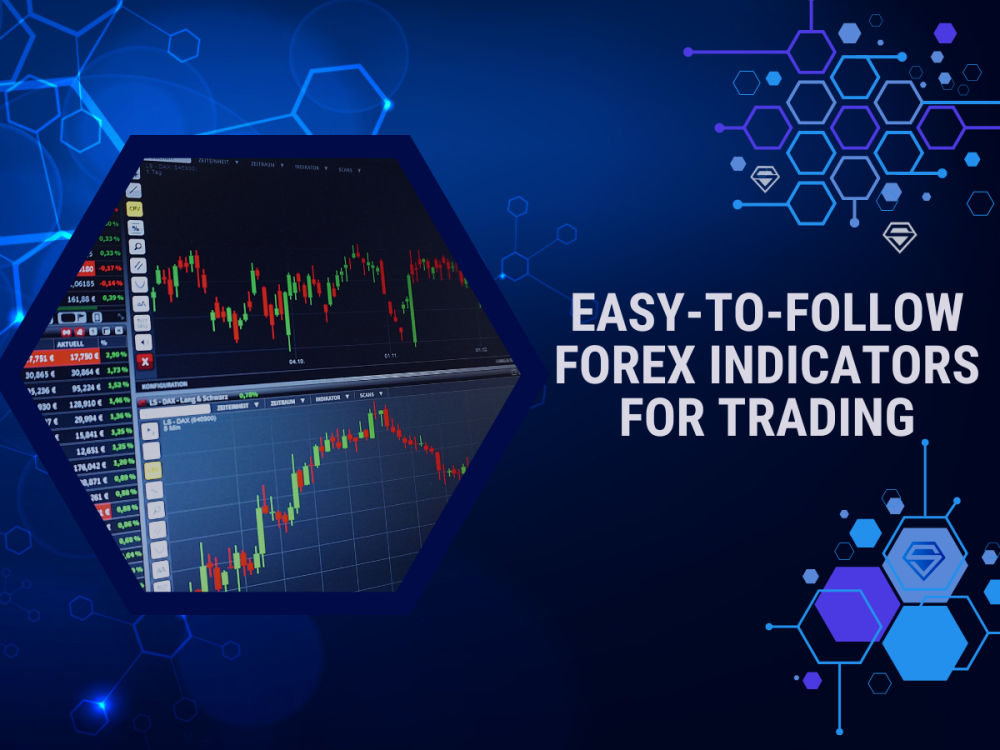
17. May, 2024
2024 Top Forex Indicators for Informed Trading Decisions
If you trade based on luck, then the Forex market isn’t for you. When it comes to trading in the Forex market, you need to have a solid trading strategy backed by reliable information. Otherwise, there’s no way you can maximize your profits.
Forex indicators are technical analysis tools that provide price signals, trend insights, and market information that can guide your trading decisions. Don’t know where to start? Fret not, fellow traders – we’ve put together the top Forex indicators to help boost your trading success.
Let’s not waste time and jump right into it!
Exploring the Top Forex Indicators
1. Moving Averages
As a beginner trader, one of the first Forex indicators you should become familiar with is moving averages. They are easy to understand and can provide valuable insights into market trends. Moving averages calculate the average closing price of a currency pair over a specific time period, smoothing out short-term price fluctuations.
By analyzing whether the price is above or below the moving average, you can determine the overall trend. When the price is above the moving average, it suggests an uptrend, indicating a potential buying opportunity. On the other hand, when the price is below the moving average, it suggests a downtrend, indicating a potential selling opportunity.
2. Average True Range (ATR)
Volatility is a common characteristic of the Forex market, and it’s important to manage it effectively. The Average True Range (ATR) is a useful indicator that can help you gauge market volatility and adjust your trading strategy accordingly.
The ATR measures the average range between high and low prices over a specific period. A higher ATR value indicates greater volatility, while a lower ATR value indicates lower volatility. By considering the ATR, you can set appropriate stop-loss and take-profit levels, ensuring that they are wide enough to accommodate market fluctuations.
3. Exponential Moving Average (EMA)
The Exponential Moving Average (EMA) is another popular Forex indicator that can help you identify potential entry and exit points. Unlike the simple moving average, the EMA gives more weight to recent price data, making it more responsive to market changes.
The EMA is particularly effective in capturing short-term trends. When the price crosses above the EMA, it may signal a buying opportunity, while a cross below the EMA may indicate a selling opportunity. By combining the EMA with other indicators, you can increase the accuracy of your trading signals.
4. Relative Strength Index (RSI)
The Relative Strength Index (RSI) is a widely used indicator that helps identify overbought and oversold conditions in the market. It measures the speed and change of price movements and provides a reading between 0 and 100.
When the RSI is above 70, it suggests that the currency pair is overbought and may be due for a downward correction. Conversely, when the RSI is below 30, it suggests that the currency pair is oversold and may be due for an upward correction. By using the RSI, you can avoid buying at the top or selling at the bottom, improving your trading decisions.
5. Fibonacci Retracements
Fibonacci retracements are a powerful tool for identifying potential support and resistance levels in the market. They are based on a sequence of numbers where each number is the sum of the two preceding ones (0, 1, 1, 2, 3, 5, 8, and so on).
By applying Fibonacci retracements to a price chart, you can identify key levels where the price may reverse or consolidate. These levels can act as potential support or resistance, helping you determine entry and exit points for your trades. Fibonacci retracements are particularly useful when combined with other technical analysis tools.
Also read: How to Master Forex Trading with the 5-3-1 Strategy
Incorporating Top Forex Indicators into Your Trading Strategy
Now that we’ve introduced you to the top Forex indicators let’s see how you can seamlessly integrate them into your trading strategy. Here are some tips to help you make the most of these tools:
Build a Strong Foundation
Before you dive into using these indicators, you need to have a solid understanding of their fundamentals. Think of this step as laying a strong foundation for your trading house. The more you understand how each indicator works, the more confidently you can incorporate them into your strategy.
Combine Indicators for Precision
Indicators work best when used together, just like spices in a recipe. By combining different indicators, you can get a more comprehensive analysis of the market. This can help you filter out the noise and focus on the signals that truly matter. Experiment with different combinations to find what works best for you.
Conclusion
Remember, incorporating these indicators into your trading strategy is not a guaranteed path to success. It’s important to continuously educate yourself, stay updated on market trends, and adapt your strategy as needed. With time and practice, you can gain confidence in using these indicators and improve your trading decisions.
Start incorporating these top Forex indicators into your trading strategy today, and see where it takes you!


